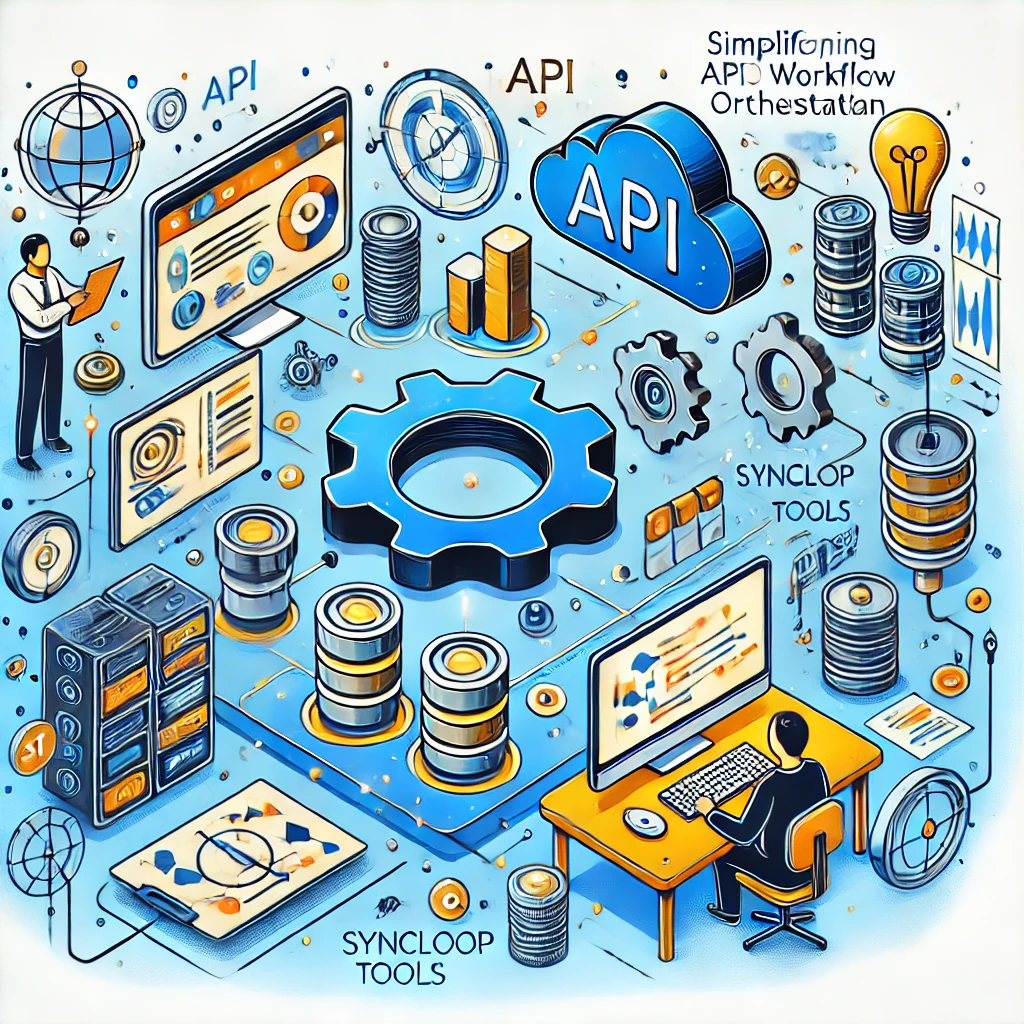Simplifying API Workflow Orchestration with Syncloop Tools

Syncloop provides a robust suite of tools designed to simplify API workflow orchestration. This blog explores how Syncloop empowers developers to automate and manage workflows seamlessly, the platform's features, and best practices for building effective orchestration solutions.
What is API Workflow Orchestration?
API workflow orchestration refers to the coordination of multiple API calls to achieve a specific business goal or process. It involves:
- Task Sequencing: Determining the order of operations to execute workflows efficiently.
- Data Transformation: Ensuring data consistency between systems by transforming it as needed.
- Error Handling: Automatically resolving or escalating errors during the workflow.
- Real-Time Processing: Enabling immediate responses to events or triggers.
Applications of API orchestration include automated order processing, data synchronization between systems, and integrating third-party services.
Challenges in API Workflow Orchestration
Businesses often face the following challenges when managing workflows:
- Complex Dependencies: Managing interactions between APIs with interdependencies can be cumbersome.
- Scalability Issues: As workflows grow in size, maintaining performance becomes difficult.
- Error Resolution: Detecting and handling errors in multi-step workflows can be challenging.
- Inconsistent Data: Ensuring data integrity across systems requires advanced mapping tools.
Syncloop addresses these challenges with tools specifically designed to simplify orchestration.
How Syncloop Simplifies API Workflow Orchestration
Syncloop offers an integrated platform for creating, managing, and optimizing workflows. Key features include:
- Visual Workflow Builder: Drag-and-drop tools allow developers to design workflows without extensive coding.
- Dynamic Control Structures: Incorporate Ifelse, Redo, Await, and Transformers to manage complex logic.
- Real-Time Orchestration: Enable workflows to respond to real-time triggers and events.
- Error Management Tools: Built-in tools help identify and resolve issues automatically.
- Scalable Architecture: Support for high-volume workflows ensures reliability under heavy loads.
Steps to Simplify Workflow Orchestration with Syncloop
Step 1: Define Workflow Objectives
Identify the goals and key steps required for the API workflow. For instance:
- Automating order fulfillment in an e-commerce system.
- Synchronizing inventory data between platforms.
- Processing real-time notifications for user activities.
Step 2: Design the Workflow
Use Syncloop’s visual workflow builder to define the sequence of tasks. Incorporate:
- API Calls: Define endpoints for each step in the workflow.
- Control Logic: Add Ifelse conditions to handle decision points.
- Transformers: Format data between systems for compatibility.
Step 3: Set Up Error Handling
Configure retry mechanisms, fallbacks, and escalation workflows to manage errors effectively. Syncloop’s tools allow you to automate these processes for seamless operations.
Step 4: Test and Simulate
Use Syncloop’s simulation environment to test workflows under different conditions. Analyze performance, identify bottlenecks, and refine configurations.
Step 5: Deploy and Monitor
Deploy workflows using Syncloop’s cloud-native infrastructure. Continuously monitor performance using analytics dashboards and make iterative improvements as needed.
Best Practices for Workflow Orchestration with Syncloop
- Modular Design: Break workflows into smaller, reusable modules to improve maintainability.
- Optimize API Calls: Minimize unnecessary API calls to reduce latency and resource usage.
- Implement Security Best Practices: Protect sensitive data with encryption and secure authentication mechanisms.
- Document Workflows: Maintain clear documentation to help teams understand and modify workflows easily.
- Monitor Continuously: Use Syncloop’s monitoring tools to track metrics such as response times and error rates.
Example Use Case: E-Commerce Order Processing
An e-commerce company needs to automate order processing, including inventory checks, payment validation, and shipping label generation. Syncloop facilitates this by:
- Defining API Endpoints: For inventory systems, payment gateways, and shipping providers.
- Automating Tasks: Using Syncloop’s workflow builder to sequence the steps automatically.
- Error Handling: Configuring retries for transient errors and alerts for critical failures.
- Real-Time Updates: Enabling immediate notifications to customers about order status.
Benefits of Using Syncloop for API Workflow Orchestration
- Efficiency: Automated workflows reduce manual intervention and errors.
- Scalability: Handle complex, high-volume workflows with ease.
- Flexibility: Advanced control structures allow for customizable workflows.
- Real-Time Capabilities: Respond to events instantly for improved user experiences.
- Cost Savings: Streamlined processes reduce operational costs.
The Future of API Workflow Orchestration
As businesses continue to adopt interconnected systems, the demand for powerful orchestration tools will grow. Syncloop’s platform not only simplifies the process but also empowers developers to create robust, scalable solutions that adapt to changing business needs.
Image Description
A visual representation of API workflow orchestration using Syncloop, featuring interconnected tasks, data flows, and control structures like Ifelse and Transformers. The image highlights automated processes and error management tools.
Back to Blogs